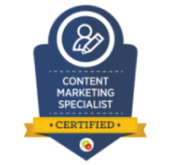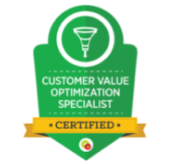I’ve lost count of the amount of B2B case studies I’ve written and edited (let alone read) over the last 10 years, including award-winning case study submissions.
The case studies have spanned multiple industries – from the biggest tech giants to cottage industry SMEs and everything in between, including the education sector.
Every case study reveals different business models and budgets, but they all have the same goal: to showcase massive success.
But not all case studies are created equal. It’s true to say I’ve read some shockers.
The worst offenders – by far – represent nothing more than lazy sales-brochure fluff.
For customer-centric businesses and brands who nail lead nurturing though – case studies can be a lucrative weapon in their marketing arsenal.
So what makes a case study with sales-driving clout?
Sack-off the sales spiel
First and foremost – avoid those pointless lists detailing features and functionality.
Dressing these up using bland stock images or fancy graphics and icons won’t cut the mustard either.
No one wants a sales pitch.
Create a solution-focused story
Okay – so if you’re not selling, what are you doing?
The answer is you’re solving… and you’re storytelling.
The best case studies underpin the need to solve a customer’s problem with good old-fashioned storytelling tactics.
Think main character (that’s your customer – not you), a problem or challenge that needs overcoming, a hero (now you can start talking about how your product/service stepped up the challenge and why your customer chose you over another) and finally a happy ending (your customer has now solved their problem).
Lots of brands are slowly getting the hang of storytelling in their content marketing but often neglect to adopt the same strategy in their case studies.
Customer-centricity wins
Place the customer in your case study at the very heart of the whole thing.
You need to make that customer’s story resonate with as many prospects as you can.
Remind prospects how they are likely to face the same challenges, obstacles and pain points as that particular customer by showing in-depth awareness of the education landscape.
Your knowledge of the industry, any research you’ve conducted and all the anecdotal feedback you’ve garnered should feed into this.
Dig out the data
Your case study might have done a great job in answering how your product/service solved a customer pain point but the icing on the sales cake is if you can incorporate some well-placed stats.
Prospects in the deliberation stage of your sales funnel want to know about results.
- How much money does your average customer save?
- How much could you improve students’ grades by?
- How much time can you save teachers every month?
- What percentage of headteachers would recommend your product?
- What impact has your product/service had?
A picture might paint a thousand words but when it comes to marketing to schools, budget holders want cold, hard data to back up your claim so get specific.
Leverage case studies across multiple channels
Ok so you’ve got your awesome case study and most likely uploaded it to the ‘case studies’ section of your website where it will sit and wait for prospects to root it out for themselves.
Or – you can use it as valuable sales enablement training for your sales team, repurpose sections into social media posts and videos that drive greater engagement, create a customer advocacy programme, enter industry awards programmes, use it to secure investment… the list goes on.
Stop thinking of customer case studies as just a ‘nice to have’ or a marketing bolt-on and start thinking of them as they truly deserve; a lucrative path to competitive advantage.










